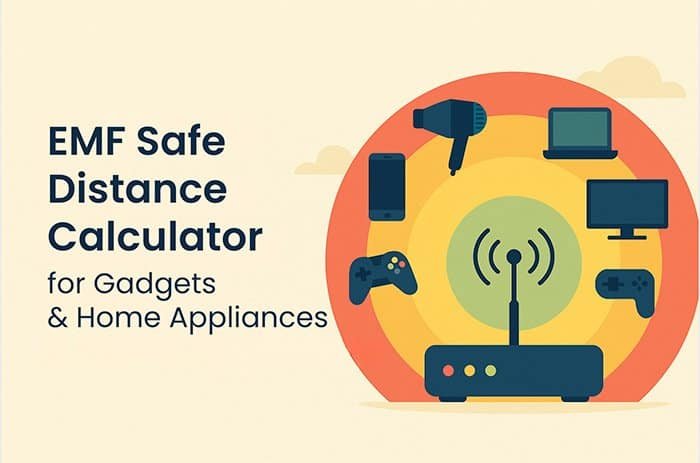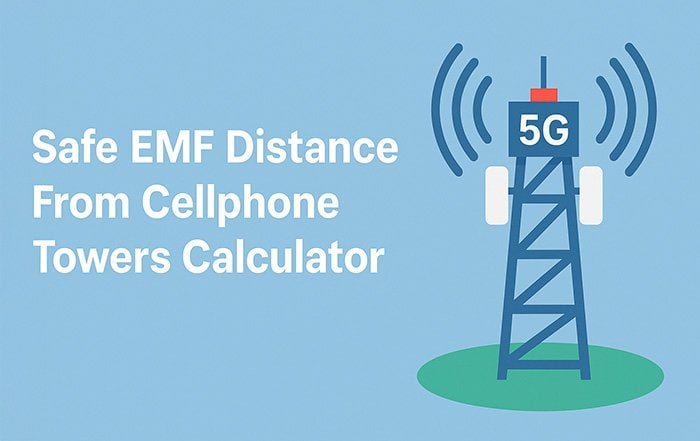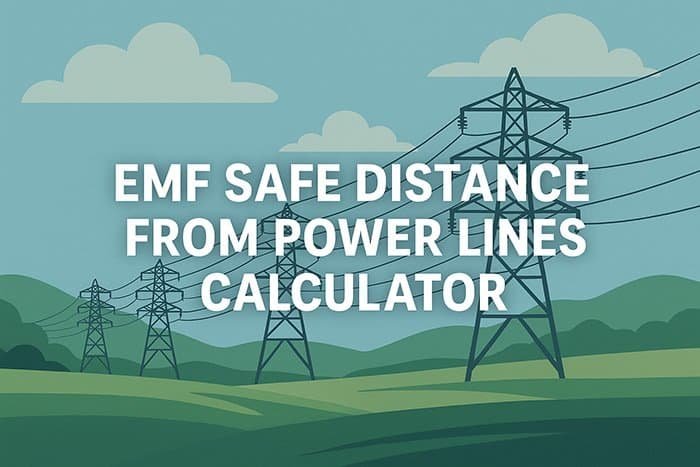Understanding your home’s electromagnetic field (EMF) environment is essential in today’s connected world. From WiFi routers and smart meters to power lines and wireless chargers, EMF sources are present in nearly every room of the house. The Whole Home EMF Auditing Tool offers a comprehensive, room-by-room evaluation to help you identify, measure, and reduce EMF exposure indoors.
This tool is ideal for families, health-conscious individuals, EMF-sensitive people, and professionals designing low-EMF spaces.
Why Audit Your Home for EMFs?
Modern homes are filled with devices that emit electromagnetic radiation—often 24/7. While many sources are low power individually, cumulative exposure across multiple rooms and over time can exceed recommended thresholds for healthy living.
This tool helps you:
- Detect hidden or persistent EMF sources
- Quantify total exposure per room and per device category
- Compare values against science-backed safety standards
- Prioritize which areas of your home need mitigation or redesign
What This Tool Measures
Using a guided room-by-room checklist, this auditing tool calculates EMF exposure from common sources including:
- Wireless devices: WiFi routers, smartphones, tablets, laptops
- Smart tech: Smart TVs, doorbells, cameras, thermostats, appliances
- Electric fields: Power lines, substations, wall wiring, extension cords
- Magnetic fields: AC power systems, transformers, household appliances
- Radiofrequency radiation: Cell towers, Bluetooth, wireless chargers
Each EMF source is evaluated by:
- Device power output or estimated field strength
- Distance from occupants
- Duration of daily exposure
- Safety standard selected (Building Biology or BioInitiative)
- Room usage type (bedroom, living room, office, etc.)
Based on Trusted Safety Standards
The tool uses conservative, research-backed exposure thresholds from:
- Building Biology Institute Guidelines: Ideal for low-EMF building and sleeping areas
- BioInitiative Report (2012): Recommends lower thresholds for long-term exposure, children, and electrosensitive individuals
- ICNIRP Guidelines: Public safety reference for regulatory compliance
These standards are applied across four EMF types: electric fields, magnetic fields, radiofrequency, and dirty electricity.
Smart Features Included
The Whole Home EMF Auditing Tool includes:
- Interactive device checklist by room (bedroom, office, kitchen, etc.)
- EMF category breakdown (low, moderate, high)
- Risk scores per room and for the whole home
- Time-based exposure estimates (e.g., night vs. day use)
- Personalized recommendations to reduce exposure
- Printable report for personal or professional use
You’ll also get context for results, including comparisons like:
- “Similar exposure to sleeping next to a WiFi router”
- “Above recommended level for children’s rooms”
- “Safe for daily exposure under selected guideline”
Who Should Use This Tool
This tool is ideal for:
- Families seeking a healthier home environment
- Individuals with EMF sensitivity or related health conditions
- Homebuyers evaluating new properties
- Architects and interior designers building EMF-aware homes
- Consultants performing home or rental EMF evaluations
How to Use the Tool
- Select each room you’d like to audit
- Choose the devices present in that room (from a predefined list)
- Enter distances and typical daily usage time
- Select the safety standard you wish to apply
- View your EMF exposure results instantly, with room-specific insights
Each report includes tailored suggestions for:
- Moving devices or changing their location
- Using shielding or timers
- Replacing wireless items with wired alternatives
- Reducing exposure during sleep or work hours
Scientific Foundation
The tool uses:
- Inverse square law for radiofrequency field decay
- Power density and SAR modeling for wireless exposure
- Field strength data from meters, research papers, and appliance manuals
- Reference limits and categories from:
- BioInitiative Report
- Building Biology Institute
- EMF-Portal.org
- ICNIRP (as comparison baseline)




